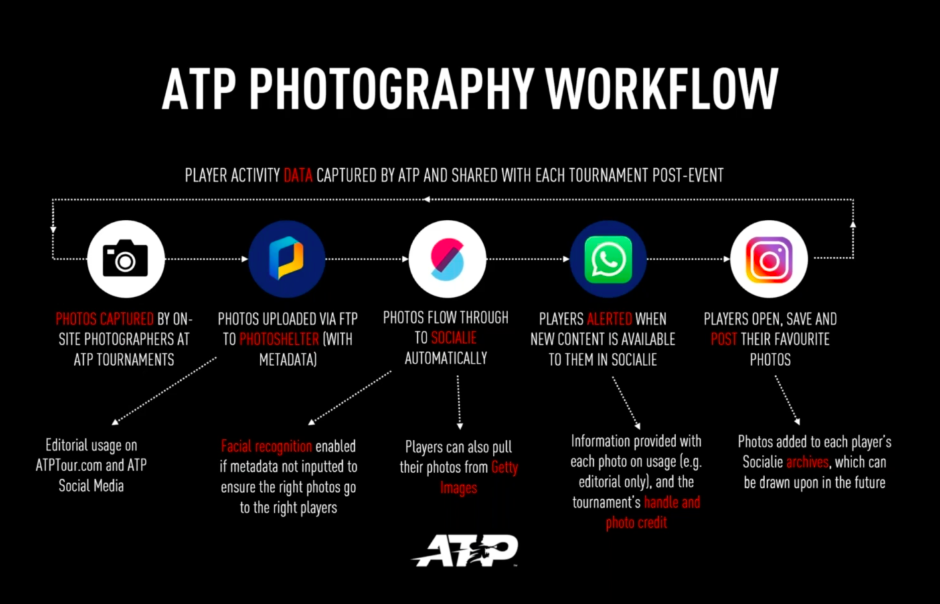Sports fans around the world have an insatiable demand for content, they want to know everything about their favourite teams as quickly as possible. From score updates during the game to behind-the-scenes stories about the players, teams are constantly creating photos, videos, GIFs, graphics and more to engage their fans.
When it comes to European football, the world’s most popular sport, leagues and teams continue to innovate ways to expand fan engagement outside of the stadium. Clubs like Arsenal F.C. invest heavily on digital platforms to deliver personalised experiences that will help them attract and retain loyal fans on and off pitch.
Content plays a crucial role in elevating that experience, with the use of social media platforms as one of the most popular ways to deliver that content to fans. Real Madrid is one example of a top club using a wide array of content on social media for fan engagement, having amassed a colossal 270.7m followers across the main five social media platforms, Facebook, Twitter, Instagram, YouTube and TikTok.
At the recent Sports OTT Summit in Paris, fan engagement was at the centre of the conversation. Roger Brosel, Head of Content and programming at LaLiga said: “The variety of content that we produce today is total – from documentary series to 10-second streaming videos, to near live during the game and everything in between.”
The challenge many sports teams and brands face, however, is that of storing, organising, and sharing. Making the most of all that visual content can be a tedious and time-consuming process when you don’t have access to the right tools.
Many teams still struggle to get their best assets out to their fans, players, and stakeholders – or even simply their social media team in real time.
Some sports photographers still rely on email or hand-delivered hard drives of photos to share their work once the game is finished, rather than delivering a link ahead of time for stakeholders to access content as it gets edited and uploaded in real time. Looking for photos from a previous season (or worse, a previous decade) can turn into hours of searching through folders on a server or CDs. The situation is even more challenging when it comes to transferring video clips, with huge file sizes and different formats. Does this frustrating experience sound familiar?
How can savvy sports teams and organisations deliver content to drive fan engagement in real time?
Enter digital asset management (DAM).
Teams that use digital asset management systems are able to eliminate those common roadblocks and get content out to their audiences much faster.
Here at PhotoShelter, we work with many European sports brands, organisations, and sports clubs from a wide range of leagues. This is how they use digital asset management:
1. Sharing photos to social media in real time
In addition to using a DAM platform as a place to store a team’s archive, this is also a dynamic tool that can help your team work faster every day – especially on live matches and when news is breaking.
For example, The ATP Tour uses the PhotoShelter for Brands real-time workflow and social media integrations to deliver content to fans and news outlets. The photographers upload images from tournaments via wireless FTP to PhotoShelter, where all images from across the tour are stored. These images are tagged automatically with relevant metadata like the player’s names or shirt number, using PhotoShelter’s AI facial recognition feature, PeopleID.
“Those photos that are in PhotoShelter have the metadata applied before they upload. Once in PhotoShelter, that allows our teams internally to use those photos for various editorial purposes, our website, our social media channels.”
Loulou Rowlands—the Director of Member Services at the Association of Tennis Professionals (ATP)

2. Saving time finding and sharing photos
In addition to speeding up your in-game storytelling, DAM can help you cut steps out of your day-to-day workflow.
For sport teams and brands, they can have all their visual content centralised in one easy-access media library. In PhotoShelter for Brands, images are tagged with robust metadata, so anyone looking for an image can run a quick keyword search to find exactly what they need in seconds.
For example at a recent supercharged motorcycle launch, PhotoShelter for Brands was at the centre of Kawasaki Europe’s content delivery efforts, providing cloud-based and real-time workflow functionalities to nearly 50 members of the media, each compiling over 300 pieces of visual content.
3. Getting more from every creative asset in your library
When you have easy access to all your creative assets, you can use them to their full potential. You reduce the risk of wasting, forgetting about, and even recreating valuable assets.
Without using a DAM system and having a centralised location for all their assets, sport teams and brands struggle with file sharing. Those that use Dropbox, Sharepoint, or WeTransfer constantly run out of server space, so real-time engagement with their audience is a real challenge.
Having a DAM platform like PhotoShelter for Brands, means they can easily browse and search all of their photos, share them quickly, and incorporate them into their storytelling.
Related content: Breaking Down Kawasaki Europe’s Content Workflow
4. Preserving your brand’s history
As you invest in visual assets, it’s important to have a way to protect them and make sure they’re available for years to come. On top of all the benefits listed above, digital asset management allows your team to keep an archive of all the most important moments in your history.
Alligin Photography in the UK uses PhotoShelter for Brands to power their work with the British Army Rugby Union and help them tell their brand story. For the annual flagship Army-Navy match at Twickenham stadium, first played in 1878, they assign a team of photographers, picture editors and copywriters, using PhotoShelter as a central workspace to store the images and share them with their audience. The team captures the emotion of the day with images that create those lasting memories of both the players and audience, for future generations to enjoy.
“We do everything through PhotoShelter, each photographer has his own folder which I can monitor. I then put it onto social media and may use ON1 if we want a special template for the image.”
Geraint Ashton Jones, Director, Alligin Photography
Have more ideas for how you can use DAM in pro sports? Share them with us @psforbrands. If you’d like to see PhotoShelter for Brands real-time workflow in action book a demo today, we’d be delighted to show you.




